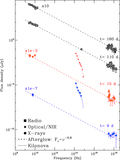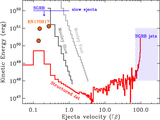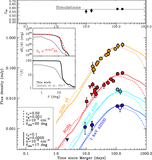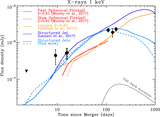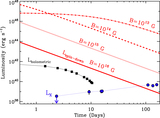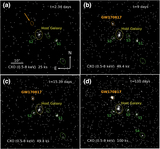Image Details
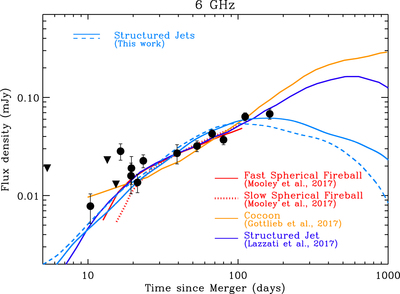
Caption: Figure 5.
Comparison of models that fit current observations of GW170817 at radio frequencies (6 GHz). Red and orange lines: quasi-spherical stratified ejecta models from Mooley et al. (2017) and cocoon model from Gottlieb et al. (2017) where no ultra-relativistic jetted component survived the interaction with the BNS ejecta (i.e., no observer in the Universe observed a regular SGRB associated with GW170817). Blue lines: structured jet models from Lazzati et al. (2017c; dark blue-line, their best-fitting model) and this work (light-blue lines) where an off-axis ultra-relativistic collimated component is present and contributes to the emission at some point (i.e., GW170817 is consistent with being an ordinary SGRB viewed off-axis). The parameters of our models are the same as in Figure 4. At t ≤ 100 days all of the models displayed predict an extremely similar flux evolution (and spectrum), with no hope for current data to distinguish between the two scenarios. The model by Gottlieb et al. (2017) and the structured jet model by Lazzati et al. (2017c) predict a continued rise of the radio emission until very late times, and are disfavored by the latest observations at ∼160 days, which suggest instead a flattening of the radio light-curve. All off-axis jet models have a similar θobs ∼ 20° and the different late-time evolution is a consequence of the different jet-environment parameters.
Copyright and Terms & Conditions
© 2018. The American Astronomical Society. All rights reserved.


